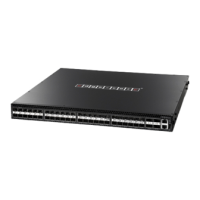Chapter 5
| VLAN Configuration
Configuring VLAN Translation
– 195 –
Configuring VLAN Translation
Use the VLAN > Translation (Add) page to map VLAN IDs between the customer
and service provider for networks that do not support IEEE 802.1Q tunneling.
Command Usage
◆ QinQ tunneling uses double tagging to preserve the customer’s VLAN tags on
traffic crossing the service provider’s network. However, if any switch in the
path crossing the service provider’s network does not support this feature, then
the switches directly connected to that device can be configured to swap the
customer’s VLAN ID with the service provider’s VLAN ID for upstream traffic, or
the service provider’s VLAN ID with the customer’s VLAN ID for downstream
traffic.
For example, assume that the upstream switch does not support QinQ
tunneling. Select Port 1, and set the Old VLAN to 10 and the New VLAN to 100
to map VLAN 10 to VLAN 100 for upstream traffic entering port 1, and VLAN 100
to VLAN 10 for downstream traffic leaving port 1 as shown below.
Figure 96: Configuring VLAN Translation
◆ The maximum number of VLAN translation entries is 8 per port, and up to 96 for
the system. However, note that configuring a large number of entries may
degrade the performance of other processes that also use the TCAM, such as IP
Source Guard filter rules, Quality of Service (QoS) processes, QinQ, MAC-based
VLANs, VLAN translation, or traps.
◆ If VLAN translation is set on an interface, and the same interface is also
configured as a QinQ access port on the VLAN > Tunnel (Configure Interface)
page, VLAN tag assignments will be determined by the QinQ process, not by
VLAN translation.
Parameters
These parameters are displayed:
◆ Port – Port identifier.
◆ Old VLAN – The original VLAN ID. (Range: 1-4094)
◆ New VLAN – The new VLAN ID. (Range: 1-4094)
12
(VLAN 10) (VLAN 100)
(VLAN 100)
(VLAN 10)
upstream
downstream

